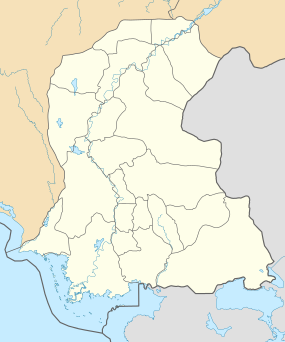Moenjodaro
| موئن جو دڙو موئن جو دڑو |
|
 |
|
| Location | Larkana, Sindh, Pakistan |
|---|---|
| Coordinates | 27°19′45″N 68°08′20″E / 27.32917°N 68.13889°ECoordinates: 27°19′45″N 68°08′20″E / 27.32917°N 68.13889°E |
| Type | Settlement. |
| Area | 250 ha (620 acres) |
| History | |
| Founded | 26-25th century BCE |
| Abandoned | 19th century BCE |
| Cultures | Indus Valley Civilization |
| UNESCO World Heritage Site | |
| Official name | Archaeological Ruins of Mohenjo-daro |
| Criteria | Cultural: (ii), (iii) |
| Reference | 138 |
| Inscription | 1980 (4th Session) |
|
[]
|
|
Mohenjo-daro (Sindhi: موئن جو دڙو, Urdu: موئن جو دڑو, IPA: [muˑənⁱ dʑoˑ d̪əɽoˑ], Sindhi for Mound of the Dead Men;English: /moʊˌhɛn.dʒoʊ ˈdɑː.roʊ/) is an archaeological site in the province of Sindh, Pakistan. Built around 2500 BCE, it was one of the largest settlements of the ancient Indus Valley civilization, and one of the world's earliest major cities, contemporaneous with the civilizations of ancient Egypt, Mesopotamia, Minoan Crete, and Norte Chico. Mohenjo-daro was abandoned in the 19th century BCE as the Indus Valley Civilization declined, and the site was not rediscovered until the 1920s. Significant excavation has since been conducted at the site of the city, which was designated an UNESCO World Heritage Site in 1980. The site is currently threatened by erosion and improper restoration.
...
Wikipedia


